
November 21, 2024

November 2008 | Vol. VII - No. 11
Questions Bring Families Closer, Reviewers Say
Kids Talk “Outside-the-Box” With Family Dinner Box of Questions
| It “led to deeper conversations and good family memories.” — Mildred Tong |
TDmonthly Magazine’s Grade School Roundtable participants raved about their experiences with The Box Girls’ Family Dinner Box of Questions, a simple game of asking and answering questions that brought the families closer.
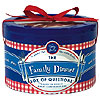 The Family Dinner Box of Questions by THE BOX GIRLS
The Family Dinner Box of Questions by THE BOX GIRLS
Gender: Boys and Girls
Category: General Games
MSRP: $19.95
TDmonthly rating:

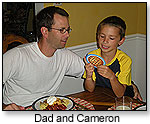 What It Is: Packaged in an attractive round box, The Family Dinner Box of Questions is designed to begin family conversations during dinner. Fifty-two cards feature questions such as:
What It Is: Packaged in an attractive round box, The Family Dinner Box of Questions is designed to begin family conversations during dinner. Fifty-two cards feature questions such as:
- What is your favorite time of the day?
- Which teacher or coach had the most impact on you?
- What kind of dessert would you eat for the rest of your life?
- What have you done to protect the environment this week?
- What was your favorite family vacation?
A portion of the proceeds from this product is donated to The National Center on Addiction and Substance Abuse at Columbia University (CASA).
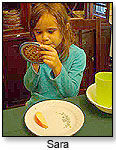 What the Moms Thought: “It’s simple and could start conversations that we might not normally have,” commented Dawson. Richardson liked the packaging: “[A] clever little box, nicely decorated, and made out of material that can be easily wiped down, which is key for a toy that is to be kept in the kitchen and around the dinner table,” she said. Jones appreciated that the packaging doubled as storage.
What the Moms Thought: “It’s simple and could start conversations that we might not normally have,” commented Dawson. Richardson liked the packaging: “[A] clever little box, nicely decorated, and made out of material that can be easily wiped down, which is key for a toy that is to be kept in the kitchen and around the dinner table,” she said. Jones appreciated that the packaging doubled as storage.
Jenkins listed ensuing conversations as her favorite quality, noting that some required research to answer. Tong agreed that “the content was really what made this toy.”
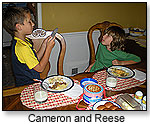 Jones liked that it was for all ages. “Even a child too young to read the cards can try to answer, and it’s always insightful to ask the same question of members of different generations and see where the conversation leads you,” she said.
Jones liked that it was for all ages. “Even a child too young to read the cards can try to answer, and it’s always insightful to ask the same question of members of different generations and see where the conversation leads you,” she said.
What the Kids Thought: Ethan (9) and Sara (7) “enjoyed discussing what to do with lottery winnings, the best jobs, and how to punish their parents’ bad behavior,” Dawson said. However, at one point, “Sara (7) sighed and asked, ‘Can’t we just talk the regular way?’” Jenkins observed that her children liked the questions and laughed a lot during play, and Tong noticed that playing “led to deeper conversations and good family memories” for Alyssa (9), Ethan (7) and Lexi (5).
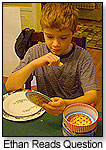 Jessica (6) and Alexander (8) liked the ease of play: just open the box and pull out a card. “There are plenty of cards, so no need to argue about who gets how many, and it is simple to ‘play’ and understand,” explained Richardson. Responses from Jessica (6) and Alexander (8) expressed emotions that ranged from laughter to quite serious and in between. Tong’s children asked, “Can we do the box of questions during lunch today?”
Jessica (6) and Alexander (8) liked the ease of play: just open the box and pull out a card. “There are plenty of cards, so no need to argue about who gets how many, and it is simple to ‘play’ and understand,” explained Richardson. Responses from Jessica (6) and Alexander (8) expressed emotions that ranged from laughter to quite serious and in between. Tong’s children asked, “Can we do the box of questions during lunch today?”
Cameron (7) and Reece (9) liked asking questions of the adults before responding themselves, and their favorite questions “dealt with rules or being in charge,” commented Jones, clearly amused. Reece (9), normally quiet during dinner conversation, took joy in acting as emcee for the game discussions. “[It] was a nice opportunity for him to lead the table conversation, for a change,” Jones said.
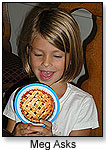 What the Kids Learned From This Toy: Ethan (9) and Sara (7) learned about topics such as the Nobel Peace Prize, the definition of “prejudice,” and different types of charities. Jenkins said her children [Taylor (16), Terence (13), Tabitha (11), Timothy (9), Tori (7), and Titus (5)] learned “more about each other and the family.” Jones’ experience with the game was similar; “We all gained some insights into one another,” she observed. She thought the conversations started were “a great way to keep the lines of communication open, particularly as they get older.”
What the Kids Learned From This Toy: Ethan (9) and Sara (7) learned about topics such as the Nobel Peace Prize, the definition of “prejudice,” and different types of charities. Jenkins said her children [Taylor (16), Terence (13), Tabitha (11), Timothy (9), Tori (7), and Titus (5)] learned “more about each other and the family.” Jones’ experience with the game was similar; “We all gained some insights into one another,” she observed. She thought the conversations started were “a great way to keep the lines of communication open, particularly as they get older.”
Richardson commented, “There were some questions that [Alexander (8) and Jessica (6)] did not understand (‘personality trait,’ ‘prejudice’), but … it gave us a chance to talk about some new words and then apply them by answering the question.” She added that they also exercised their speaking skills as they took turns answering.
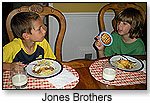 How to Improve It: “Skip the cardboard insert and make the can fit the number of cards,” Dawson suggested. Jones found the packaging attractive but noted that the useful summary of the game was not very visible on the bottom of the package; she suggested putting it in a more visible spot on the exterior. She would also like to see more cards; “You can go through 52 very quickly if everyone is interested!” she explained.
How to Improve It: “Skip the cardboard insert and make the can fit the number of cards,” Dawson suggested. Jones found the packaging attractive but noted that the useful summary of the game was not very visible on the bottom of the package; she suggested putting it in a more visible spot on the exterior. She would also like to see more cards; “You can go through 52 very quickly if everyone is interested!” she explained.
Tong thought the price somewhat high compared to more complex board games. Dawson modified the wording on some of the cards to engage her children more: a great invention rather than the greatest invention. She also thought a few questions had a biased foundation. “‘Who do you think has it easier: boys or girls?’ suggests that one gender does indeed come with advantage,” she explained.
Would You Want Another Toy Like This? “I will definitely be sharing this toy with friends and family — in fact, we have pulled it out on several occasions when other kids are over for dinner,” summed up Richardson.
Roundtable participants were former corporate accountant Robbin Dawson with Ethan (9) and Sara (7); office assistant Charlene Jenkins with Taylor (16), Terence (13), Tabitha (11), Timothy (9), Tori (7) and Titus (5); stay-at-home mother Heather Jones with Reece (9), Cameron (7) and Meg (5); World Bank policy advisor Gail Richardson with Alexander (8) and Jessica (6); and stay-at-home mother Mildred Tong with Alyssa (10), Ethan (7), Lexi (5) and Erik (18 months).
Copyright © 2024 TDmonthly®, a division of TOYDIRECTORY.com®,
Inc.



 The Family Dinner Box of Questions by THE BOX GIRLS
The Family Dinner Box of Questions by THE BOX GIRLS
 What It Is: Packaged in an attractive round box, The Family Dinner Box of Questions is designed to begin family conversations during dinner. Fifty-two cards feature questions such as:
What It Is: Packaged in an attractive round box, The Family Dinner Box of Questions is designed to begin family conversations during dinner. Fifty-two cards feature questions such as:  What the Moms Thought: “It’s simple and could start conversations that we might not normally have,” commented Dawson. Richardson liked the packaging: “[A] clever little box, nicely decorated, and made out of material that can be easily wiped down, which is key for a toy that is to be kept in the kitchen and around the dinner table,” she said. Jones appreciated that the packaging doubled as storage.
What the Moms Thought: “It’s simple and could start conversations that we might not normally have,” commented Dawson. Richardson liked the packaging: “[A] clever little box, nicely decorated, and made out of material that can be easily wiped down, which is key for a toy that is to be kept in the kitchen and around the dinner table,” she said. Jones appreciated that the packaging doubled as storage. Jones liked that it was for all ages. “Even a child too young to read the cards can try to answer, and it’s always insightful to ask the same question of members of different generations and see where the conversation leads you,” she said.
Jones liked that it was for all ages. “Even a child too young to read the cards can try to answer, and it’s always insightful to ask the same question of members of different generations and see where the conversation leads you,” she said. Jessica (6) and Alexander (8) liked the ease of play: just open the box and pull out a card. “There are plenty of cards, so no need to argue about who gets how many, and it is simple to ‘play’ and understand,” explained Richardson. Responses from Jessica (6) and Alexander (8) expressed emotions that ranged from laughter to quite serious and in between. Tong’s children asked, “Can we do the box of questions during lunch today?”
Jessica (6) and Alexander (8) liked the ease of play: just open the box and pull out a card. “There are plenty of cards, so no need to argue about who gets how many, and it is simple to ‘play’ and understand,” explained Richardson. Responses from Jessica (6) and Alexander (8) expressed emotions that ranged from laughter to quite serious and in between. Tong’s children asked, “Can we do the box of questions during lunch today?” What the Kids Learned From This Toy: Ethan (9) and Sara (7) learned about topics such as the Nobel Peace Prize, the definition of “prejudice,” and different types of charities. Jenkins said her children [Taylor (16), Terence (13), Tabitha (11), Timothy (9), Tori (7), and Titus (5)] learned “more about each other and the family.” Jones’ experience with the game was similar; “We all gained some insights into one another,” she observed. She thought the conversations started were “a great way to keep the lines of communication open, particularly as they get older.”
What the Kids Learned From This Toy: Ethan (9) and Sara (7) learned about topics such as the Nobel Peace Prize, the definition of “prejudice,” and different types of charities. Jenkins said her children [Taylor (16), Terence (13), Tabitha (11), Timothy (9), Tori (7), and Titus (5)] learned “more about each other and the family.” Jones’ experience with the game was similar; “We all gained some insights into one another,” she observed. She thought the conversations started were “a great way to keep the lines of communication open, particularly as they get older.” How to Improve It: “Skip the cardboard insert and make the can fit the number of cards,” Dawson suggested. Jones found the packaging attractive but noted that the useful summary of the game was not very visible on the bottom of the package; she suggested putting it in a more visible spot on the exterior. She would also like to see more cards; “You can go through 52 very quickly if everyone is interested!” she explained.
How to Improve It: “Skip the cardboard insert and make the can fit the number of cards,” Dawson suggested. Jones found the packaging attractive but noted that the useful summary of the game was not very visible on the bottom of the package; she suggested putting it in a more visible spot on the exterior. She would also like to see more cards; “You can go through 52 very quickly if everyone is interested!” she explained.